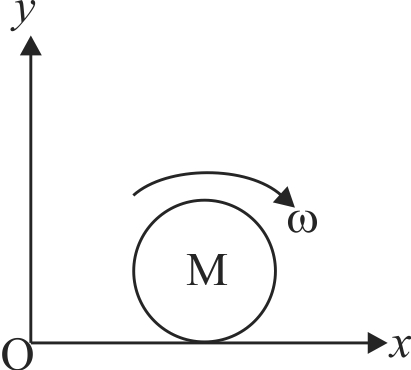365637 A body of mass \(m\) and radius \(r\) is released from rest along a smooth inclined plane of angle of inclination \(\theta\). The angular momentum of the body about the instantaneous point of contact after a time \(t\) from the instant of release is equal to
365640 A child is standing with folded hands at the centre of a platform rotating about its central axis. The kinetic energy of the system is \(K\). The child now stretches his arm so that moment of inerita of the system doubles. The kinetic energy of the system now is:
365637 A body of mass \(m\) and radius \(r\) is released from rest along a smooth inclined plane of angle of inclination \(\theta\). The angular momentum of the body about the instantaneous point of contact after a time \(t\) from the instant of release is equal to
365640 A child is standing with folded hands at the centre of a platform rotating about its central axis. The kinetic energy of the system is \(K\). The child now stretches his arm so that moment of inerita of the system doubles. The kinetic energy of the system now is:
365637 A body of mass \(m\) and radius \(r\) is released from rest along a smooth inclined plane of angle of inclination \(\theta\). The angular momentum of the body about the instantaneous point of contact after a time \(t\) from the instant of release is equal to
365640 A child is standing with folded hands at the centre of a platform rotating about its central axis. The kinetic energy of the system is \(K\). The child now stretches his arm so that moment of inerita of the system doubles. The kinetic energy of the system now is:
365637 A body of mass \(m\) and radius \(r\) is released from rest along a smooth inclined plane of angle of inclination \(\theta\). The angular momentum of the body about the instantaneous point of contact after a time \(t\) from the instant of release is equal to
365640 A child is standing with folded hands at the centre of a platform rotating about its central axis. The kinetic energy of the system is \(K\). The child now stretches his arm so that moment of inerita of the system doubles. The kinetic energy of the system now is:

